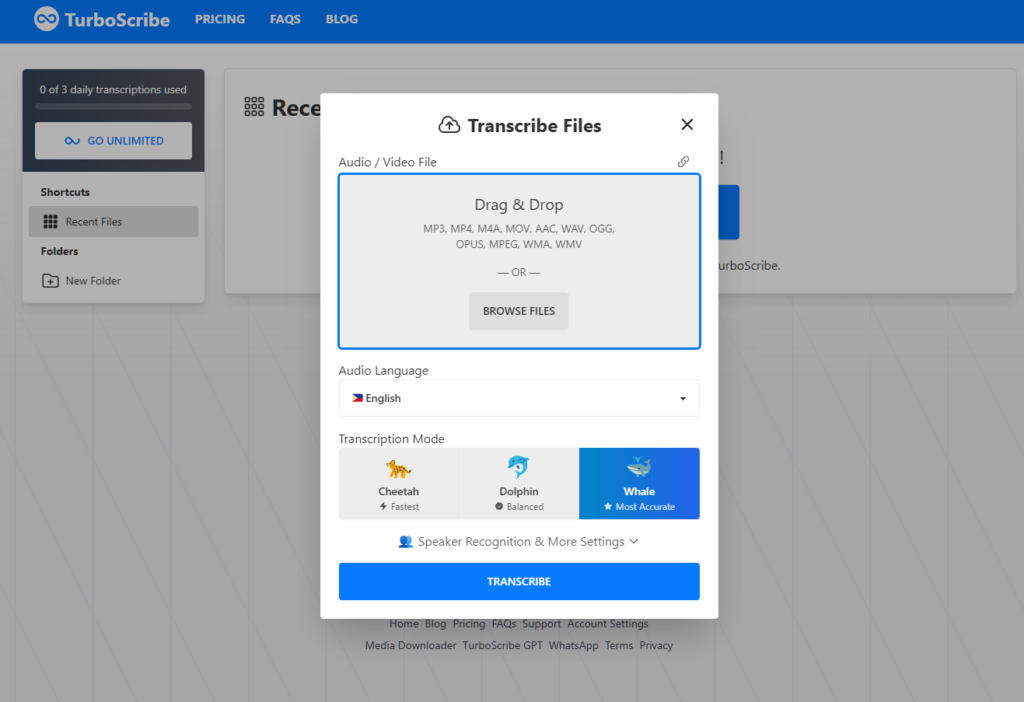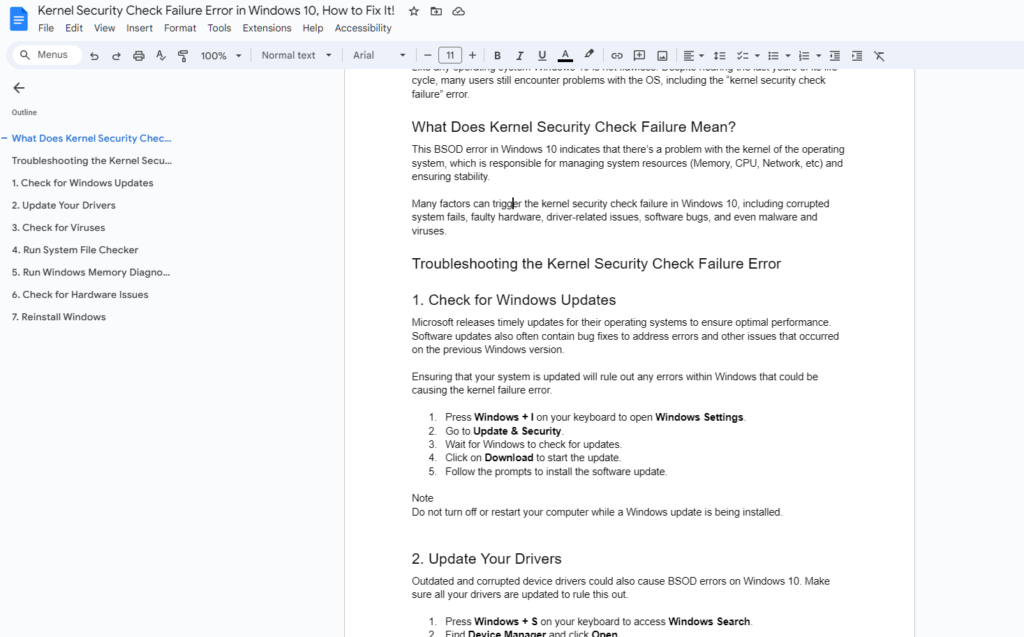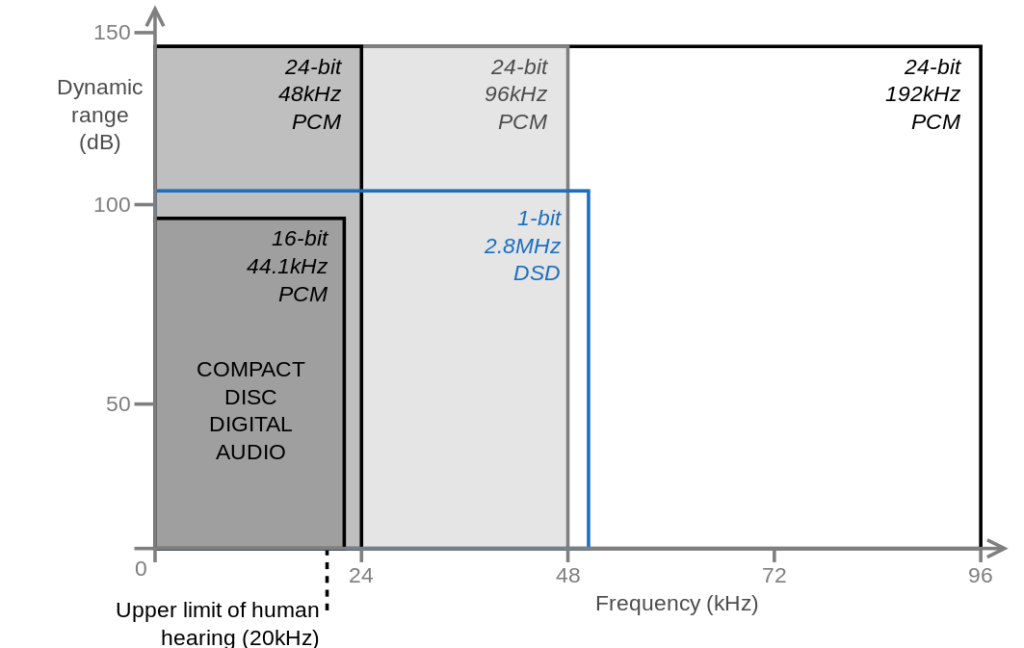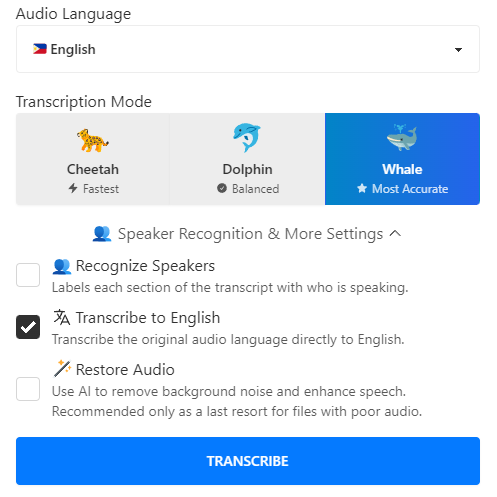With the help of artificial intelligence (AI), automated audio transcription systems have taken a leap in terms of what they can do. AI audio transcription takes advantage of different technologies such as natural language processing (NLP) and machine learning (ML) to recognize speech accurately and convert them into text fast.
This article will show you how AI audio transcription works and how to use it correctly to get accurate results.
AI Audio Transcription Key Features
- Accuracy – most AI transcription services boast accuracy rates of up to 90% for sources with good audio-quality and speech clarity.
- Speed – AI transcription usually outputs results in real-time or after several minutes depending on the length of the recording. This is just a fraction of the time it would take for manual transcriptions.
- Cost Effectiveness – automated transcription services can do the work of 3-5 or more workers at a time, reducing the need for hiring transcribers and cutting the cost of labor.
- Scalability – AI transcription services can take in large amounts of audio data at once and provide output at faster rates, making them great for companies and large projects.
- Language Support – many AI transcription services offer support for different languages, making them great for global applications.
AI Audio Transcription Workflow
1. Audio Processing
Clear and high quality audio is key for accurate AI audio transcription results. You can use different techniques to improve audio and speech clarity. This may include applying equalization to boost speech frequencies, adjusting volume levels, and using noise reduction filters.

Advanced audio processing such as echo removal and audio level normalization can also be used before audio transcription for optimal results.
2. Speech Recognition
After ensuring the quality of the audio file, speech recognition is next. At its core, speech recognition is the process of breaking down an audio recording into individual sounds and analyzing each sound using an algorithm to find the best word that fits that sound.

Machine learning models like convolutional neural networks (CNNs) and recurrent neural networks (RNNs) are often used for speech recognition. These models are trained on large data sets of speech to accurately recognize spoken words.
3. Transcription
After speech signals are segmented, the AI transcription service converts it into text. It maps the detected speech segments to linguistic units such as words and sentences. Many factors are also considered during the process such as grammar, context, and vocabulary to generate accurate transcriptions.

Many services also utilize Natural Language Processing to analyze the context of the speech and improve the results.
4. Editing & Review
Although automated transcription services are highly accurate, they are not perfect. Errors can still occur during transcriptions, which still needs human intervention to edit and enhance the generated text.

After transcribing, it’s essential to review the result to check for misinterpretations and contextual ambiguities.
Optimizing AI Audio Transcription
Use High Quality Audio
Clear speech without background noise and distortions allow AI algorithms to identify and segment spoken words better.

Using professional-grade microphones and audio interfaces are some of the best ways to improve audio clarity. Optimizing the recording environment by minimizing external noise can also help you get better results.
Clear & Distinct Speech
Speaking clearly, avoiding mumbling or slurring, and enunciating words can help AI transcription recognize spoken content better. Speaking at a moderate pace also allows AI systems to process speech segments effectively and reduce errors.
Specify Language & Accent
Some AI transcription services allow users to set the language and accent in the audio transcription for improved accuracy. This can be helpful for languages with diverse dialects or regional variations. Language and acoustic models trained for specific regions and accents may perform better.

Make sure to specific these parameters within the system (if supported), before proceeding with the audio transcription.
Don’t Skip Review & Editing
Despite AI advancements, it’s still no match to human intelligence, consciousness, and common sense. When using AI audio transcriptions, never skip on editing and reviewing results. Human editors can quickly catch errors, clarify ambiguous phrases, and correct any inaccuracies with the output.
Choosing An AI Audio Transcription Service
Making sure the AI audio transcription service you pick aligns with your company or business will help you achieve the best results.
Accuracy & Reliability
Transcription accuracy is the most important factor to consider when selecting an AI transcription service. Look for providers with positive reviews and large user traffic, they are likely the best in the industry.
Language & Dialect Support
Make sure that the service you choose supports the language and dialects relevant to your audio transcription needs. Check with the provider if they support region specific languages, accents, and even technical jargons for a specific industry or niche. Some AI transcription services may also specialize in a specific language.
Security & Privacy
Data security and privacy is also important when picking an AI transcription service, especially when you’re dealing with sensitive and confidential information. You can check a provider’s security and data policies by asking for compliance certifications such as HIPAA or GDPR. Knowing the provider’s policy with data retention and access control is also crucial for ensuring your data is secured.
Cost
Check the pricing and services offered by AI transcription providers to see if they match your budget and usage requirements. There are services that charge per minute of audio, while others offer subscription-based plans or give discounts for large transcription volumes.
When enhancing transcription accuracy, clear audio input is essential. Using a high-quality wireless lavalier microphone ensures crisp, interference-free audio recordings, making AI audio transcription significantly more reliable and accurate.
Best Seller
Sale

Hollyland LARK M2S – Wireless Clip-on Microphone
- 7g Lightweight, Titanium Clip, Discreet Design
- Clear sound with 24-bit/48kHz, 70dB SNR, 116dB SPL
- Noise Cancellation & 300m Long-Range Stability
- Works with Camera/iPhone/Android/Laptop
- Perfect for Content Creators, Online-Teaching, Streaming
$139
$159
FAQs
What is AI audio transcription?
It is the process of using AI algorithms to convert spoken language from audio files and recordings into written text. Natural language processing and machine learning are utilized during conversion to improve accuracy and output quality.
How accurate is AI audio transcription?
Audio transcription accuracy depends on many factors, including quality of audio recording, clarity of speech, complexity of language, and accent of the speaker. Many AI transcription services market their model to have 80 to 95% accuracy but results may still vary.
Can AI transcribe multiple speakers in a conversion?
Yes, this is a common feature on many AI transcription systems. These systems use speaker diarization techniques to differentiate the voice of each speaker to transcribe who said what in a conversation or interview.
How does background noise affect AI transcription accuracy?
Background noise can prevent AI systems from accurately recognizing speech from an audio recording. However, some systems apply background noise reduction and speech enhancement filters on audio files during the conversion process for accurate results.
What are the main advantages of using AI for audio transcription?
Using artificial intelligence in audio transcription helps with speed, scalability, and overall accuracy of the transcription system.
Are AI transcriptions expensive?
AI transcription services vary in cost. Their pricing may depend on several factors, like features offered and quality of transcription. However, AI transcription services are still more cost-effective than manual transcription for large volumes of audio data.
How can I improve the accuracy of AI audio transcriptions?
The best practices to improve audio transcription accuracy is to:
- Use high quality and clear audio.
- Record with clear and distinct speech
- Speak at the decet pace when recording audio for conversion
- Set language parameters in the system correctly before transcribing
How do AI transcription services handle different languages and accents?
AI transcription services use language and accent detection algorithms to identify the language and accent of the audio content, allowing them to apply the correct transcription model that is trained for that specific accent and language.
What privacy concerns should I be aware of with AI transcription services?
You should keep in mind the process of handling your audio data. Make sure that the provider doesn’t have direct access to your audio files and does not retain audio and transcription data from your account.





























.png)




